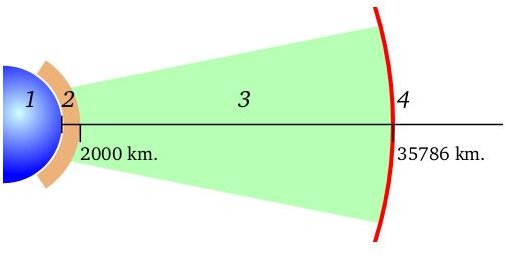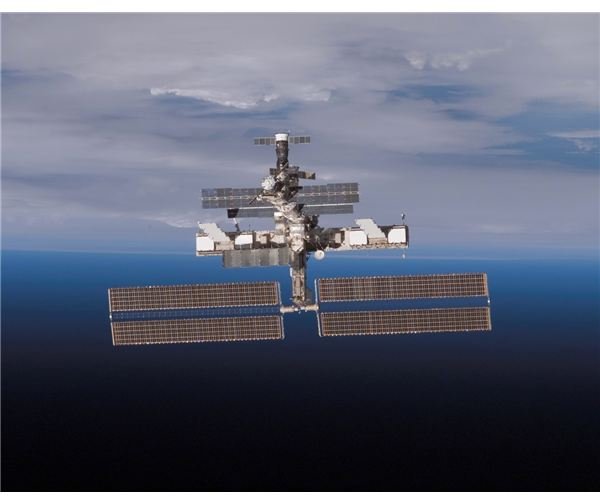Low Earth Orbit (LEO) and Other Types of Circular Orbits
What is Low Earth Orbit or LEO
Most commonly, Low Earth Orbit or LEO is defined as the orbit that extends 160 - 2,000 km (100 - 1250 miles) above the Earth’s surface. There are also other definitions that make low Earth orbits extend to up to 3,000 km. Some human objects that operate from LEO are the Space Shuttle, the Hubble Telescope, the International Space Station or ISS and a large number of satellites. Most of the manned missions besides the Apollo program have also taken place in this region.
How a Satellite Reaches LEO - Requirements
In order for an object to escape the Earth’s gravity, it has to acquire a net velocity of at least 7,814 m/s tangent to the curve of the Earth. This is a requirement to reach an orbital altitude of about 150 km (92 miles). In order to keep a stable orbit around the Earth, the object or satellite has to have enough speed to balance the gravitational force pulling it back down.The lower a satellite orbits the Earth, the more speed it needs to balance this force.
For example, at an altitude of 100 miles the satellite will need a velocity of about 17,500 miles per hour and will orbit the Earth in about 90 minutes. Correspondingly, at an altitude of 22,000 miles, the satellite will need a speed of about 7000 miles per hour and will make an orbit in about 24 hours.
Advantages and Disadvantages of Operating from LEO
Using LEO as an operational zone has certain advantages. It is closer to the Earth’s surface and much cheaper and convenient to place a satellite, perform experiments, fix and install new equipment. After the operations are finished, the return trip lasts for a very short time.
However, there are disadvantages as well. The amount of atmospheric gases is low but still significant in these altitudes. These gases cause atmospheric drag that result in orbital decay over time. The satellite will eventually slow down and be pulled back by the Earth’s gravity. Another serious problem is the dwell time, or the time a satellite remains above a region. LEO satellites orbit the Earth too quickly ( ~18,000 miles per hour ) and this may cause problems during the operation of a weather or communications satellite over a certain part of the globe.
Other Types of Orbit: Medium, Geostationary and High Earth Orbit
Other types of circular orbits include the Medium, the Geostationary and the High Earth Orbit:
The Medium Earth Orbit or MEO lies between the Low Earth Orbit and the Geostationary Orbit (see below) at an altitude of 2,000 km to 35,900 km.
A Geosynchronous or Geostationary Earth Orbit or GEO is a circular orbit around the Earth at the altitude of 35,786 km. At this altitude, the geostationary satellite travels at the same speed as the Earth rotates, making a 24-hour orbit around the Earth and can be seen to stay or hover over the same place above the Equator. This kind of orbit is used for communication and weather satellites. The first satellite to be placed into geostationary orbit was Syncom 3 in 1964.
There is a difference between a geosynchronous and a geostationary orbit. A satellite with a geostationary orbit is circling the Earth in the equatorial plane, in the same direction of Earth’s rotation and therefore appears stationary above the same point on the Earth’s surface. In this case the time period for a full revolution takes 24 hours. A geosynchronous orbit is a more general term and refers to an orbit that places a satellite over the same spot on the Earth once every day.

The High Earth Orbit or HEO extends over the geostationary limit of 35,786 km.
Image: Zone 1: Earth, Zone 2: Low Earth orbit, Zone 3: Medium earth orbit, Zone 4: Geosynchronous earth orbit.
Sources:
- “Types of Orbits” by polaris.iastate.edu
- “Low Orbit” by universetoday.com
- “Types of orbit” by esa.int
- “Satellites orbit and orbit definitions” by radio-electronics.com
Images:
